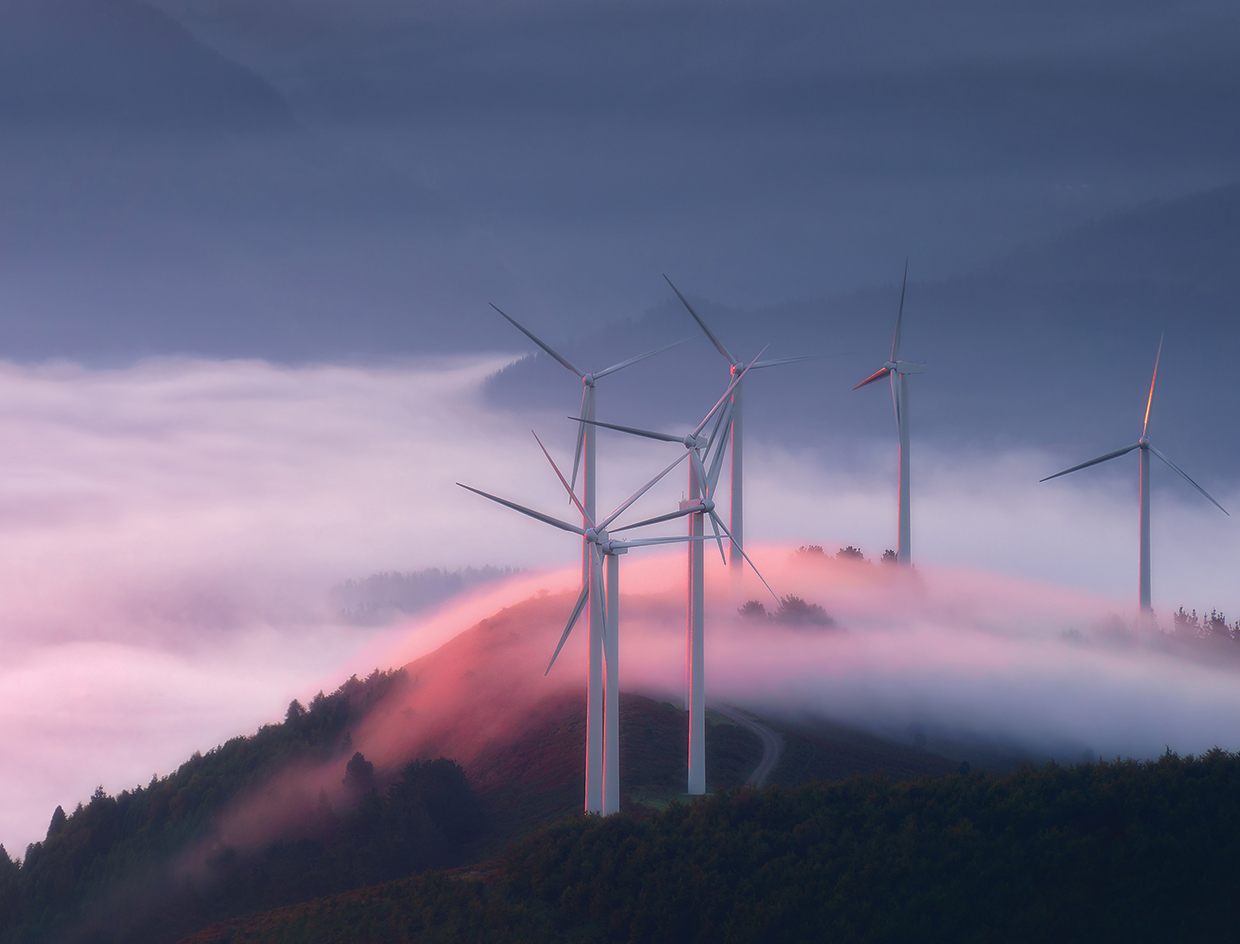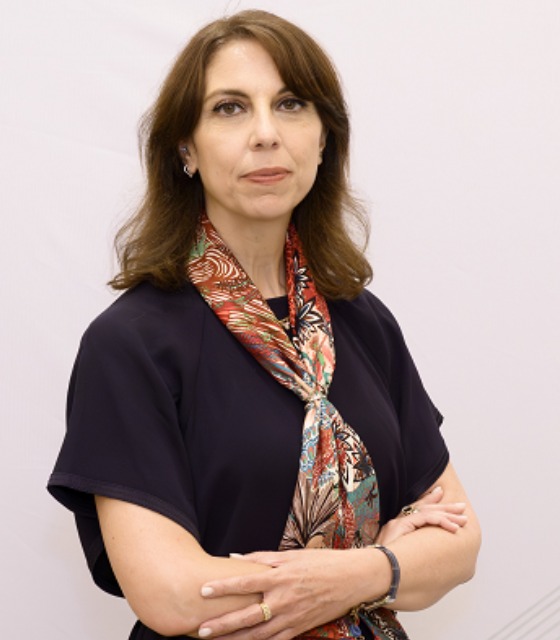Riding a wave of renewed investor sentiment, Argentina has turned to greening its energy matrix. It has set its sights on 20% renewable energy output by 2025, but is the infrastructure – both financial and physical – ready? Eleanor Wragg reports.
With icy winds barrelling across the plains of Patagonia, fierce sun beating down on its arid north-western provinces, as well as fast-flowing rivers and acre upon acre of soybeans, Argentina has renewable energy resources in spades. But unlike its neighbours, it has yet to capitalise upon them: currently, less than 2% of the country’s electricity comes from wind, solar, hydropower and biomass, versus 53% for the region as a whole. All this is set to change, thanks to a series of reforms put in place by the administration of President Mauricio Macri which aim to lure investment into Argentina’s nascent green energy industry.
New laws open up the power sector
In 2015, the Argentinian government published a law establishing that the proportion of renewables in the domestic energy matrix should reach 20% by 2025. Immediately following this came the RenovAr programme, which saw regular public bidding processes in which different companies presented their investment projects and the price at which they were willing to sell their capacity to wholesale power market administrator Cammesa (Compañía Administradora del Mercado Mayorista Eléctrico).
The programme has been a roaring success. In the first round, the country initially offered 600MW of wind, 300MW of solar, 65MW of biomass, 15MW of biogas and 20MW of small hydropower capacity, but the solar figure was increased to 400MW after bids were submitted for a whopping 6,346MW. Among long-term power purchase agreements (PPAs) signed during this first round were those by French renewable player Total Eren, and Parque Eólico del Sur, a subsidiary of US company Pan American Energy.
Subsequent rounds, 1.5 and 2, have been met with a similarly warm reception. In total, the RenovAr programme has offered 3,367MW of energy deals, received 18,875MW of bids, and has awarded 4,466MW.
“Coming from a situation where before this process there was a grand total of maybe 200 to 280MW-worth of installed renewable energy in the country, this is just a tremendous growth,” says Juan Payeras, IFC’s head of infrastructure in the Southern Cone.
The auctions are expected to usher in US$3.5bn in financing over the next two years, according to the IFC, which is currently working toward providing financing for some of the successful bidders. “This demonstrates confidence and hope in the market that the reforms that are being put into place are indeed there for the long run, given that these auctions are based on 20-year power purchase agreements by the market offtaker, Cammesa,” Payeras adds.
“We believe the Renovar1 and Renovar2 auctions were a great achievement for the Argentinian government. The offers received exceeded the initial expectation and there is a downward trend in the cost for the system,” says Rubén Castrillo, executive director, energy project finance at BBVA.
However, he highlights that most of the capacity was awarded to local developers. Prices declined so far that many international firms, such as Spain’s Acciona and Italy’s Enel Green Power, were shut out. Investors are now concerned that prices have fallen so low that winning projects may not be economically viable.
Worryingly, many companies that won projects in the first two rounds are still looking for financing. Speaking to local press, Verónica Geese, secretary of state for energy of the province of Santa Fe, said: “There are delays, and instead of coming into operation this year, as stipulated by the contracts, projects to be built in Jujuy province will now not be coming online until next year.”
“With a few exceptions, private local banks do not normally offer tenors beyond five to seven years for US dollar-denominated funding and considering the contracts with Cammesa for the RenovAr auctions were for 20 years there is a gap that should be bridged with help of foreign institutions,” says BBVA’s Castrillo. “The usual project finance banks active in other countries offering 15-plus long-term traditional non-recourse loans have not arrived in the country yet. But if Argentina continues improving at a macro and political level we believe foreign project finance banks will soon bring in financing structures that are offered in other countries.”
Indeed, those projects which have received funding have mostly done so with the help of multilaterals and development banks. Parque Eólico del Sur gained US$21.8mn of corporate financing from KfW Ipex-Bank for seven Vestas V126-3.45MW wind turbines, with Danish export credit agency EKF providing cover amounting to 95% of the loan.
Meanwhile, the commissioning of Total Eren’s 97.2MW Vientos Los Hercules project, which aims to generate around 400GWh per year, is planned for the first quarter of 2019, after it achieved financial closure with a combination of a 16-year limited recourse loan arranged by KfW Ipex-Bank, guaranteed by Euler Hermes through a comprehensive political and commercial export credit insurance, and a 15-year parallel credit facility provided by the German development finance institution DEG, and the Dutch development bank FMO.
The IFC’s Payeras adds that financing is “certainly not as plentiful” as in other markets like Mexico or Chile, but like Castrillo, he sees the financing mix changing as confidence builds.
“We are already starting to see some of the international and even some of the local banks beginning to extend their maturities to levels that are more appropriate for financing long-term projects like these, whereas two years ago, I think the best we were seeing in Argentina was maybe five or six-year financing, if that. Today, I am starting to see commercial banks that are hitting 12 years and considering going longer. There definitely has been a shift towards increased maturities, and also increased interest on the part of international commercial banks and greater risk appetite on the part of local banks as well.”
Reforms smooth the way
Buoyed by the reception of the RenovAr programme, President Macri declared 2017 “the year of renewable energy”, awarding 147 renewable energy projects in 18 provinces.
A resolution passed by the Federal Administration of Public Revenues in August last year should make getting projects off the ground easier. It extends the exemption of renewable energy equipment and components from value-added tax (VAT), going some way toward reducing upfront costs. In addition, new market rules have been introduced allowing large power users to meet their renewable power obligations directly through private supply contracts. A note from law firm Baker McKenzie says that the change “grants flexibility to establish the contract terms (such as the term, assignment priority and price), including the possibility to negotiate mid/short-term PPAs with no limitations”.
All of these incentives will go some way toward enabling Argentina to rebuild its economy on stronger foundations, cutting costs and developing infrastructure for the future.
“For every 1,000MW in renewable energy, the country saves US$300mn annually in liquid fuel,” says Sebastian Kind, Argentina’s undersecretary for renewable energy, in a statement.
Winners and losers
In the north of the country, the drive toward renewables is already having a multiplier effect. Some of Argentina’s sunniest provinces are also rich in lithium – which is used in the manufacture of power cells attached to wind turbines and photovoltaic panels – and lithium battery manufacturing projects are springing up in places which previously only mined the mineral for export. A joint venture between Jemse (Jujuy Energía y Minería), the Italian firm Fib Faam and Y-Tec, the technological division of energy company YPF, recently announced the launch of the first lithium cell factory in the north-western province of Jujuy, the first in South America.
But not everyone is happy about the push for green energy. “You have some provinces that are rich in oil and gas and others in mineral resources, mainly gold, silver, copper and lithium,” says Carlos Alfaro, partner at Argentinian law firm Alfaro Abogados.
“What is an opportunity for some investors can be perceived by others, such as local businesses, as potentially going to hurt their business,” adds Corina Monaghan, senior vice-president of credit, political and security risks at JLT Specialty USA. She notes that vocal groups in certain provinces are “not happy about the direction that their province is taking from an energy standpoint”, and as a result are “finding ways to slow down the process”, hampering investment projects.
“What we have experienced are very subtle types of political risk which are delaying projects and slowing down our clients’ operations,” she says, adding that
she is now seeing more demand from clients for insurance to cover risk in Argentina.
“They look very much at insurance. And they do that for a couple of reasons. Not only for their own risk management or mitigation purposes, but also because their lenders are asking for it, because of the way banks look at the credit risk that is sitting in Argentina, versus the credit risk that is sitting in, say, Europe.”
Bringing perceptions of the country’s risk in line with realities is another challenge. “What I find really interesting is how the insurers react to the risk, and how differently,” says Monaghan. She sees a 50:50 split between believers and sceptics. “Around half don’t think that it’s a good bet to make an investment in Argentina, and they either charge exorbitant rates or simply decline to provide cover. The other half are happy to support a transaction in Argentina. If it’s a long-term transaction, more than two years, some are not so keen, and will quote at a robust rate. Others will simply decline to quote, for example, five years, in Argentina.”
Investor confidence
Investor sentiment toward Argentina as a whole can best be described as patchy. Although it returned to the capital markets with a bang in 2016, recent IPOs from a wave of Argentine companies have demonstrated slightly more muted interest. In February, airport operator Corporación America Airports slashed its expected price range for its IPO to US$17-US$19 from a prior US$19-US$23. It was a similar story for power generation company Central Puerto, which priced its New York initial public offering below guidance. That said, the power sector seems to be gaining favour: in BNamericas’ Electric Power Survey 2017, 10% of respondents cited the country as Latin America’s most attractive jurisdiction to invest in, up from zero in the previous year’s survey.
“The renewables push was the first big push towards facilitating investment that was made by the government. It is the first of several in the infrastructure space. It is to be expected that because it was the first, there was more interest in it, and that is partially what has happened. Given the bounty of natural resources that Argentina has, it stands to reason that there would be plenty of interest in this sector,” says Payeras, who believes the success of international and domestic interest in renewable energy will help to translate into success in other areas. The government is counting on this for its next PPP programme for toll roads, with the first round seeking an estimated total investment of about US$6bn. “The initial success in renewables will help build investor confidence to look at other areas as well,” says Payeras.
Lofty ambitions
Can Argentina make it to 20% renewables by 2025? “In my opinion, they are shooting for the stars,” says Alfaro. “This is a government that wants to motivate people, but it may be too optimistic to think that by the year 2025 you will achieve 20% of production coming from these new sources. Certainly you may need foreign investors, particularly in mining.”
Although it has made a strong start, Argentina is far from being crowned Latin America’s top renewable energy market, not least because it has to compete with its better-rated neighbours in the region for foreign money. Chile, which has pursued an aggressive energy transformation drive since the beginning of former President Michelle Bachelet’s return to power, is already well on its way to meeting its goal of generating 70% of its electricity from domestic renewable energy resources by 2050, with investors flocking in from around the world. Meanwhile, Mexico is about to embark upon its fourth long-term power auction as its government aims at 38TWh of clean energy supply for 2021.
Infrastructure bottlenecks are also a major issue. The Argentinian government has already cut back on the pace of expanding investment in renewable production capacity as it rushes to build the additional 5,000km of transmission lines needed in the next three years to keep up.
But as financial institutions gradually become more comfortable with what’s on offer, the government’s market-friendly reforms and falling renewable energy prices mean a transformation of Argentina’s energy sector is increasingly possible.
“Argentina in general today is a good bet for any investor. The caveats appear when you look at the country’s history of political instability, but for the first time we have a government that is not one of the traditional parties of Argentina. It is not a disrupter,” says Alfaro.
The country still has a long way to go, but it is well on track to joining its peers in the Latin American renewable energy revolution.







